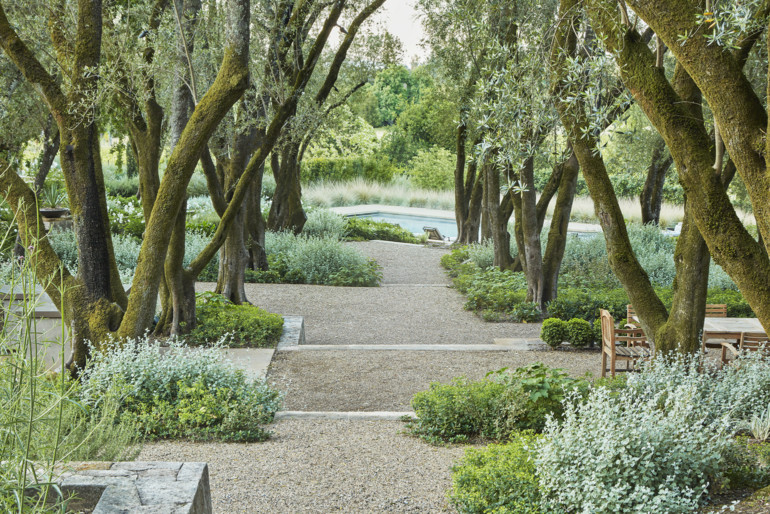Marin County offers an abundance of outdoor pursuits, both active and leisurely, but perhaps there’s no better place to enjoy them than in your own outdoor space. A thoughtful landscaping plan beautifies your property and expands your living space. But how we enjoy and design our outdoor spaces has changed a lot in recent years, especially due to the pandemic.
“A lot of people, especially young families, moved out of San Francisco because of the pandemic, looking for more space to raise their children,” says Christian Douglas, landscape designer and urban farmer at Christian Douglas Design in San Rafael. “They want more comfortable outdoor spaces with shade structures where they can work from home. They’re looking at the land as an extension of the house.”
The ongoing drought, climate change, migration and the booming housing market are other factors influencing landscape design right now, according to a recent outdoor living trend report by Yardzen, an online landscape design firm based in Sausalito. “The American yard is at an inflection point,” says Yardzen CEO and cofounder Allison Rhodes Messner. “We’re seeing a shift in how people design and interact with their outdoor spaces. Homeowners want outdoor spaces that are not only treated to a high level of design, but encourage interaction and functional use, and are designed with sustainability top of mind.”
With this new era of landscape design in mind, we asked a few pros to share their insights into the latest trends and tips for creating personalized outdoor retreats. Here’s what to keep in mind as you embark upon your next landscaping project, whether it’s a simple refresh or a complete do-over.
Fitness and Fun
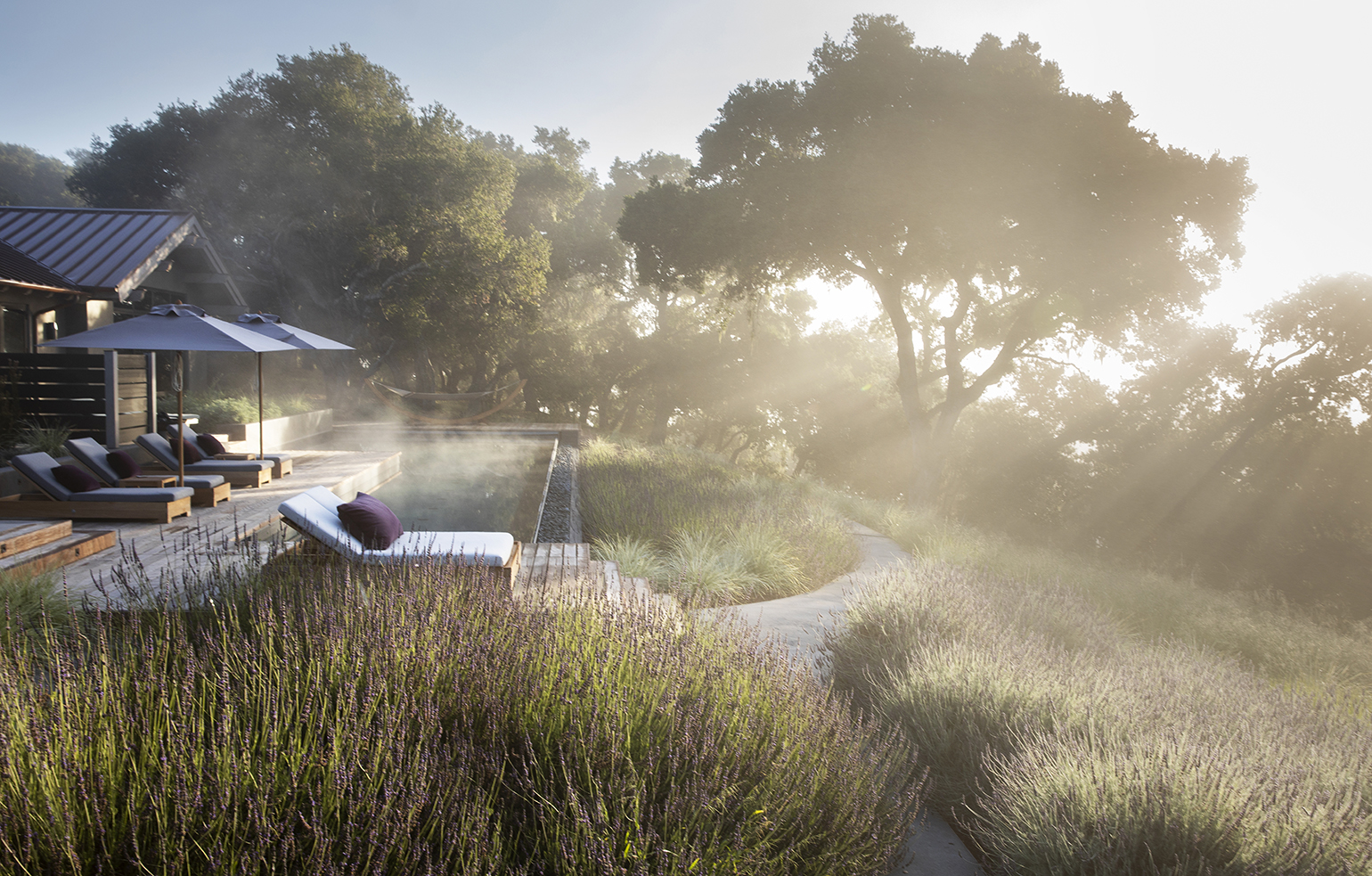
One of the biggest design trends to come out of the pandemic is the demand for home gyms and recreational spaces. Outdoors, local designers are seeing demand for traditional swimming pools top the list, followed by lap pools. Hot tubs can be associated within the overall pool structure or nestled into a secluded spot, perhaps near the primary suite. Cold-plunge spas, said to help muscles recuperate after vigorous exercise, are also trending. Pool-adjacent features such as cabanas, saunas and outdoor showers are common add-ons as well.
As pickleball rages across the country, so does the call for home courts. Pickleball courts take up less space than other sports courts, say landscape architects and partners Gretchen Whittier and Kate Stickley at Arterra Landscape Architects in San Francisco. “We don’t get a lot of people requesting tennis courts,” Whittier says. “They’re a big footprint. Most people go to clubs to play tennis.”
An Invitation to Party
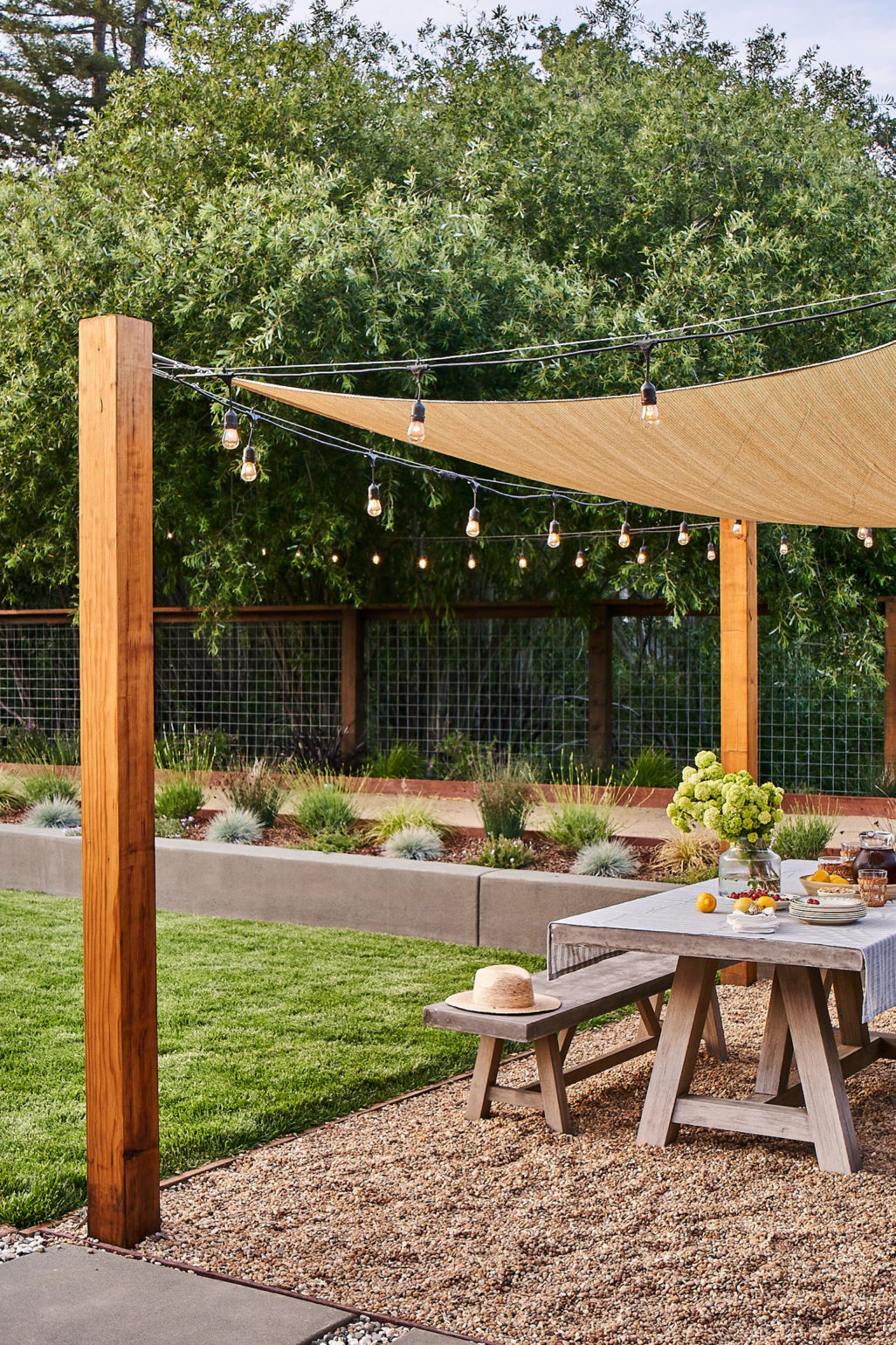
As the world opens from pandemic precautions, social gatherings large and small are back in vogue. Culinary prep and dining areas are central to most landscape designs. They run the gamut from a grilling platform outside the main house to full-on kitchens with cabinetry, islands, appliances, pizza ovens, beverage chillers and running water. Lounge areas built for conversation around gas- or propane-burning firepits are popular as well.
Stickley recommends designing for the largest group you imagine hosting. A sprawling plaza where 200 guests can comfortably mingle a few times a year can look barren the rest of the time, however, so break it up with smaller, connected spaces.
If your outdoor spaces are linked by stairs, encourage people to move about by guiding them along inviting pathways to a strong visual element like a water feature at the end, advises Mike Lucas, landscape architect at Lucas & Lucas Landscape Architecture in Healdsburg and coauthor of the recently published Architectural Gardens: Inside the Landscapes of Lucas & Lucas (Princeton Architectural Press, 2022) with Thad Orr. “Transitions are really important to get from point A to point B,” he says. “If people can see the space, they’re more likely to go there than if it’s hidden.”
Functional Front Yards
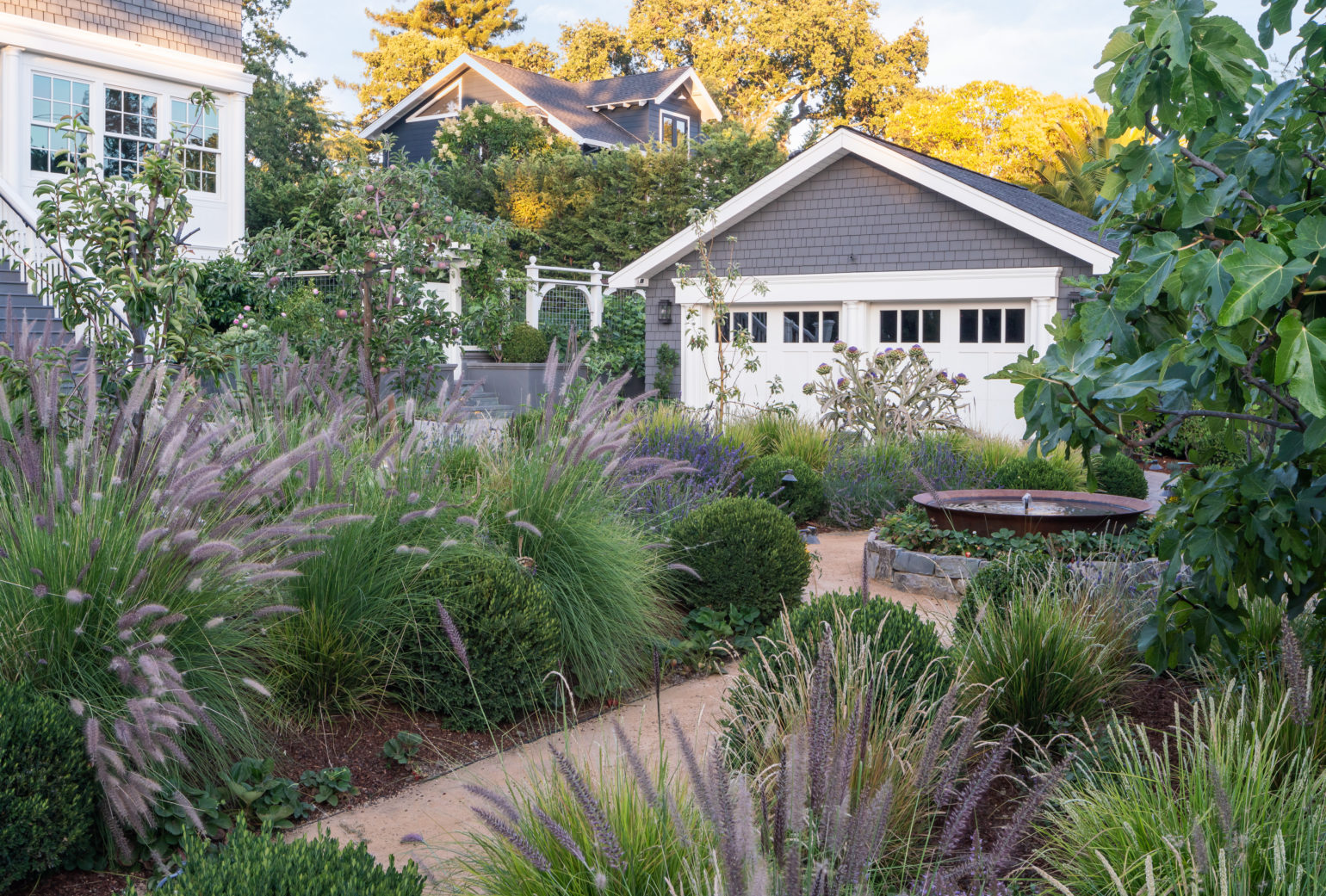
But the backyard isn’t the only place for socializing these days. Born out of the pandemic, the idea of a socially distanced front porch gathering or lawn chair circle spawned an entirely new way to think about the front yard. “We saw these wonderful spaces emerging all over Marin during the past two years, and just about everywhere across the country,” Rhodes Messner says. “The front yard is no longer just about curb appeal — it’s become a place to engage and interact with neighbors and friends.”
The trend that is still going strong: Yardzen has seen 150% increase this past year in requests for functional front yards. “Now, features that were long reserved for private backyards — fire pits, dining areas, pergolas, decks and even play areas — are making their way out front,” Rhodes Messner says.
Words to the Water-Wise
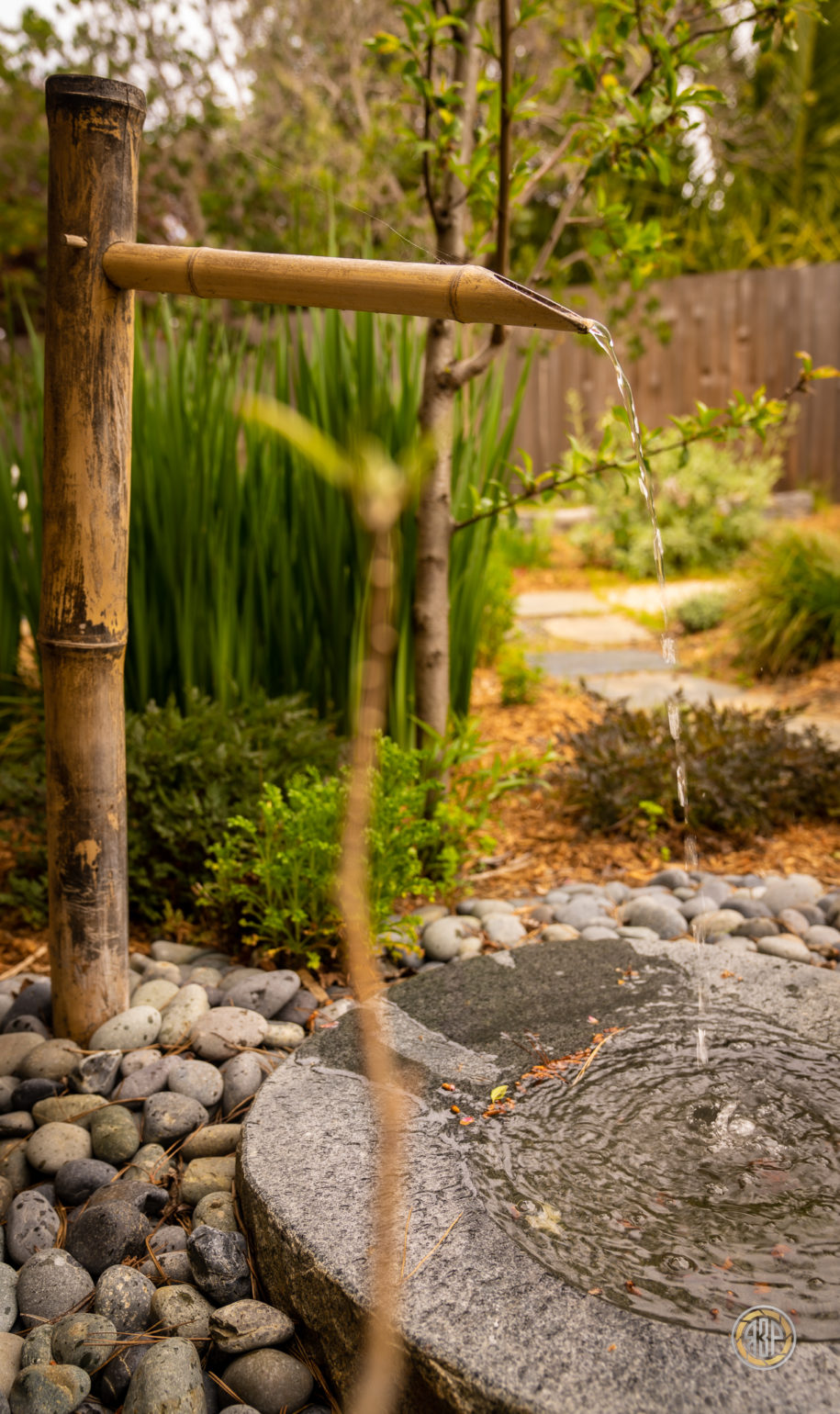
Water conservation is a way of life in Marin, where drought and shortages run rampant. One way many homeowners are conserving water is to remove or reduce water-hogging lawns, which also require a significant amount of maintenance and are not environmentally friendly, due to pollution from fertilizer and pesticides, as well as exhaust emissions from mower. Yardzen reports that requests for lawn replacement have increased 66% over the last year. “Marin County has been ahead of the curve with lawn replacement for well over a decade,” Rhodes Messner says.” While much of the rest of the country wakes to the idea that lawns aren’t a sustainable use of space, we’ve known this for some time here.”
Instead, homeowners are choosing to replace lawns with drought-tolerant landscaping featuring native plants and species from similar climates around the globe. They’re also trading lawns for a mix of functional spaces, such as more dining and seating areas, raised edible garden beds, naturalistic play areas, and gravel hardscaping for more paths and groundcover.
Lucas says he’s increasingly won over by improvements in synthetic surf, another option for homeowners who are removing traditional lawns but still want an open area for recreation and entertaining. “It’s a nice way to create additional space for outdoor entertaining other than one giant stone patio, and a lot more affordable,” he says. “Artificial grass can help scale the space.”
Another earth-friendly measure homeowners can opt for is water catchment, which falls into two formats. Rainwater harvesting collects and filters the rain from rooftops. Greywater recycling reuses water from showers, baths and washing machines, but not toilets. Rainwater is cleaner to nourish sensitive plant life and can be stored longer, but its collection requires a parade of tanks. Greywater is disbursed daily. “Greywater recycling has a much smaller footprint,” Whittier says. “You can put it under decks or partially bury it.”
Decorative water features are in demand despite the fact the average household spends 50 to 60 percent of its water usage on landscaping, according to Diego Torrelio, building and landscape contractor at Circlefoot in San Mateo, which works with clients in Marin County. He typically designs water features that also support the environment, perhaps by draining into a basin or reservoir as a habitat for birds, fish or plants. Overflow can be directed to bioretention areas or swales that infiltrate water into the ground. “It becomes a multifunctional element that is ecological in nature other than a water valve tied into the municipal system,” he says.
A Taste for Edible Gardens
In previous times, the family garden was a separate entity, tucked off to a side or behind the garage, and often ignored. It was a hard sell to steer clients otherwise, says Douglas, who tried to make suggestions such as substituting an avocado tree for a magnolia.
Today’s clients have greater interest in and awareness of their food sourcing, however. They’re not only asking for fruit trees, berry shrubs, vegetable and herb gardens and beehives, but are putting them on full view or blending them within the landscaping. “The minute you place (the edible garden) closer to the house rather than an afterthought, you start to elevate the materials and give more purpose to it, and people become better at looking after it,” Douglas says.
Consider This
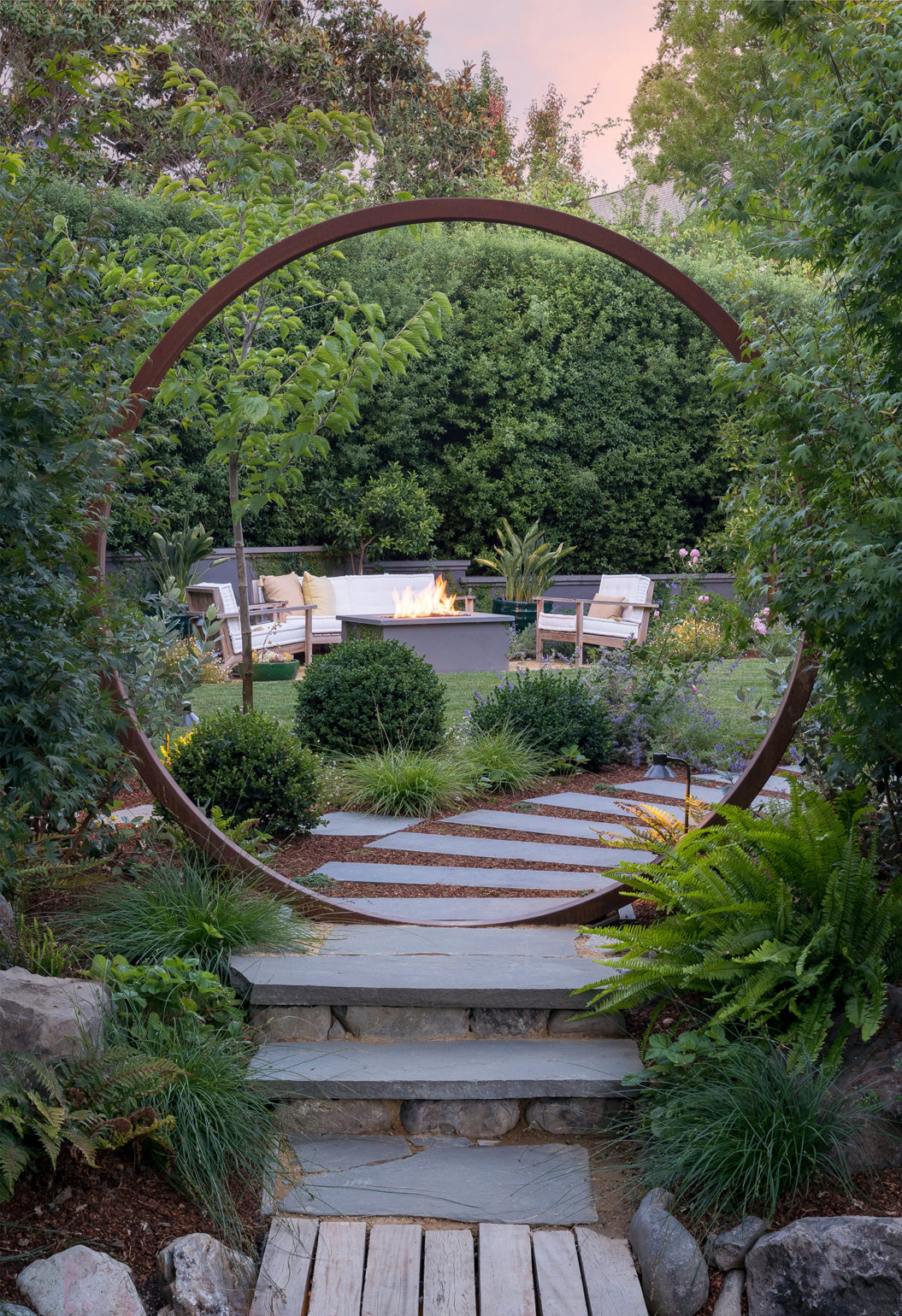
Before you embark on your landscaping project, two factors to consider are climate and budget, say the experts. In Marin, and the entire Bay Area for that matter, every landscaping project is a custom job, due to the microclimates and diverse topography. Within our county’s borders are numerous ecosystems where weather can change abruptly, even from neighborhood to neighborhood.
“Depending on where you are in the county, the temperature fluctuates within a 10- to 15-degree span,” says Torrelio. “The same with rainfall — you can see a difference of 30 inches a year between near the redwoods and near the bay.”
Marin’s microclimates become especially important when considering plant selection. “Sausalito is notorious for fog,” says Douglas. “In one four-block radius, we’re able to grow blood oranges, which need a decent amount of sun; four blocks away, we’re lucky to grow kale or even tomatoes because of the heavy fog.”
Another consideration is budget — where can you save, and where can you splurge? Because every project is unique, it can be difficult to make blanket statements on cost containment. “It doesn’t work to say, ‘let’s take 25 percent out of this,’ if the design has four matched trees and a courtyard,” Whittier says. “It has to be what’s important to you to determine whether we can change materials or simplify or delete items.”
One way to save: “Planting smaller plants can save a little,” Lucas says. “You don’t get immediate gratification, but you should do it if it means getting better hardscape solutions.”
A cost-benefit analysis can help you decide between two or more options. That’s what Circlefoot did when a cramped, ailing redwood had to be removed from a homesite. The tree was appropriately extracted, then milled into dimensional lumber and slabs to create a pergola, fencing, dining table and benches. Doing so was less expensive than harvesting, milling and transporting a new log from a lumber company — and also more environmentally friendly. “I’d rather people spend less money because it’s the right thing for the planet,” Torrelio says. “It isn’t good for business, but it’s good for the environment.”
5 Tips for Glitch-Free Garden Design
- Match the right plant to the right spot to assure survival. Succulents will shrivel in clay that doesn’t drain well, and moisture-loving plants will wilt in super-sandy soil.
- Lay crushed rock instead of mulch on your plant beds. The rock helps reduce erosion and won’t have to be replaced as often as the woody kind.
- Hungry deer aren’t deterred by fences, so make your gardens less appetizing. Deer like soft petals and leaves like roses, grapevines and lettuce — not so much strong aromatics and fuzzy leaves like sage and lamb’s ear.
- Reduce indoor foot traffic by building an attractive pathway around your home to the backyard entertaining area. The path should be smooth, not gravely, if you’re expecting strollers or wheelchairs.
- Consult your homeowner’s insurance carrier for input on your landscape design. Policy conditions and exclusions change rapidly, and you want to make sure you’re covered if disaster strikes.
More from Marin:
- Design Your Perfect Backyard Space: Your Outdoor Home Guide
- How to Keep Your Lawn Happy and Environmentally Friendly
- 7 Gardening Tips to Grow Better

Pamela Dittmer McKuen if a freelance writer sho specializes in home, design and travel content. What landscaping trend is McKuen embracing at home? “I’m especially drawn to pollinator gardens — anything that will attract bees and butterflies,” she says. “My absolute favorite is echinacea, which spreads rapidly and comes in an impressive array of hues. I’m also fond of wildflowers like milkweed and black-eyed Susans.”

